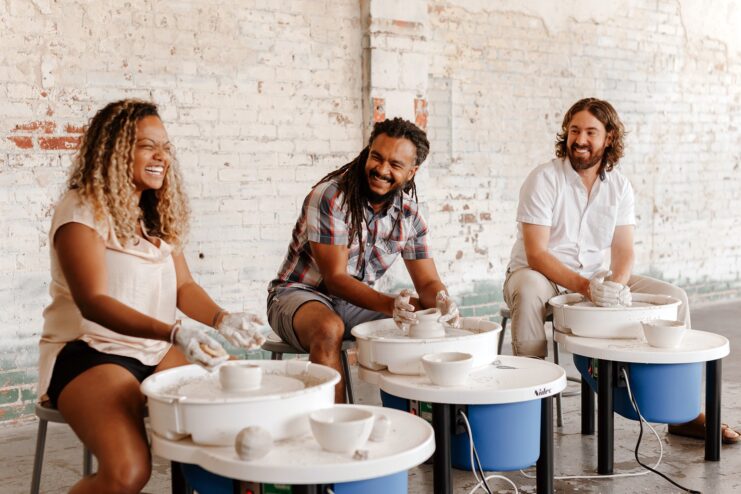Life can be difficult on its own, but having to live with anxiety can feel debilitating. The condition is often unpredictable, with some days going smoothly and others seeming like the walls are closing in. Generalized anxiety disorder is the most common form of anxiety, and cases range from mild to moderate. Symptoms often include nervousness, frequent worrying, trouble sleeping or focusing, fatigue, and panic attacks.
Figuring out ways to cope with anxiety and its symptoms can be the key to overcoming your mental health battle. It can be a challenge to learn effective coping skills on your own, especially when you don’t know where to start. Keep reading for four ways to get on top of your anxiety and take control of your life again.
1. Consider Medication

Before trying to manage anxiety on your own, it’s a good idea to consider professional treatment. Don’t buy into the negative stigma surrounding getting help. Admitting you need outside assistance isn’t a sign of weakness. It proves you have the strength necessary to care for yourself.
An effective way to start your mental health journey is by considering your medication options. Many people with anxiety benefit from taking antidepressants because they can restore the balance of “happy hormones” in your brain, like serotonin and dopamine. Selective serotonin reuptake inhibitors (SSRIs) are a very common type of antidepressant. These work by increasing the amount of serotonin absorbed by the body, so you’ll get more of those mood-boosting hormones in your system. Well-known brands include Lexapro, Zoloft, and Prozac.
No matter how many coping strategies you try, if your brain’s chemicals are imbalanced, your mental health may continue to struggle. With your mind more clear, you’ll be ready to take on the world and work on building coping strategies.
2. Set Some Goals

Therapy is another professional treatment option. One of the most effective types of therapy is cognitive-behavioral psychotherapy. This involves talking through and thinking about your problems and coming up with possible solutions. It’s very goal-oriented, getting you to face your fears little by little. While seeing a therapist is always a good idea, you can practice cognitive behavioral techniques on your own.
Devote some time to think about what makes you anxious. It could be driving, public speaking, or going places alone, for example. Now establish a long-term goal relating to your worries — like shopping by yourself if that scares you. Then you can come up with short-term goals that will dip your toe in the water. Continuing the shopping alone example, this could be having someone wait for you while you pay by yourself. To step it up, next have them wait in the car while you go inside.
Cognitive behavioral therapy is all about strategically using baby steps to overcome your biggest obstacles. This structured approach empowers you to gradually expand your comfort zone and diminish the grip of anxiety-provoking situations. By breaking down your long-term goal into smaller, manageable steps, you can build confidence and desensitize yourself to triggers.
3. Get Grounded

No, this doesn’t mean punishing yourself like getting grounded as a kid. Grounding is a coping technique to use during times of great stress or panic attacks. It involves using your physical surroundings to distract yourself from your overwhelming emotions, anxiety, or dissociation. It can “bring you down to earth,” so to speak.
For many people, breathing exercises work well in these moments. Focusing on the air moving in and out of your lungs can redirect your thoughts away from the stressor. One such technique is the 4-7-8 method, which involves inhaling for four seconds, holding for seven, and exhaling for eight. If that doesn’t feel like it’s working, put your hand on your chest or stomach to feel the breaths going in and out better.
For some, breathing techniques don’t work as well at redirecting your thoughts. In this case, try the 5-4-3-2-1 method for a bigger distraction. This involves using what’s around you to engage your five senses. Identify and name five things you can see, four things you can touch, three things you can hear, two things you can smell, and one thing you can taste. This engages your senses and brings your attention to the immediate environment.
4. Put Your Feet Up

In moments of stress, you’ve probably been told to “relax” or “calm down.” This advice can be infuriating, usually because the person giving it has no understanding of how anxiety works. Having a chronic condition can make relaxing a task that feels nearly impossible. However, learning to relax can also be an effective coping mechanism.
So where do you begin? Think about activities that make you happy or feel at ease — these could be hobbies like baking, crocheting, or reading. Try to use a hobby that doesn’t involve much physical activity. Part of relaxing is going into a flow state, where you sit quietly and comfortably while doing your activity.
Starting with a hobby is great for learning to relax, but to kick it up a notch, try pampering yourself. Give yourself the at-home spa treatment with a face mask, massage, and meditation. Allow yourself to enjoy the present moment, and only let yourself dwell on positive thoughts. If you’re a busy person, make sure to block time in your schedule for relaxation. This might seem silly at first, but prioritizing your mental health is a matter you need to take seriously.
Focus on You
Learning and employing coping strategies can be a difficult process at first. As you begin to focus on prioritizing yourself and your mental health, you’ll find it gets easier. Use your resources, set goals, stay grounded, and learn to let yourself relax. You can do it!

